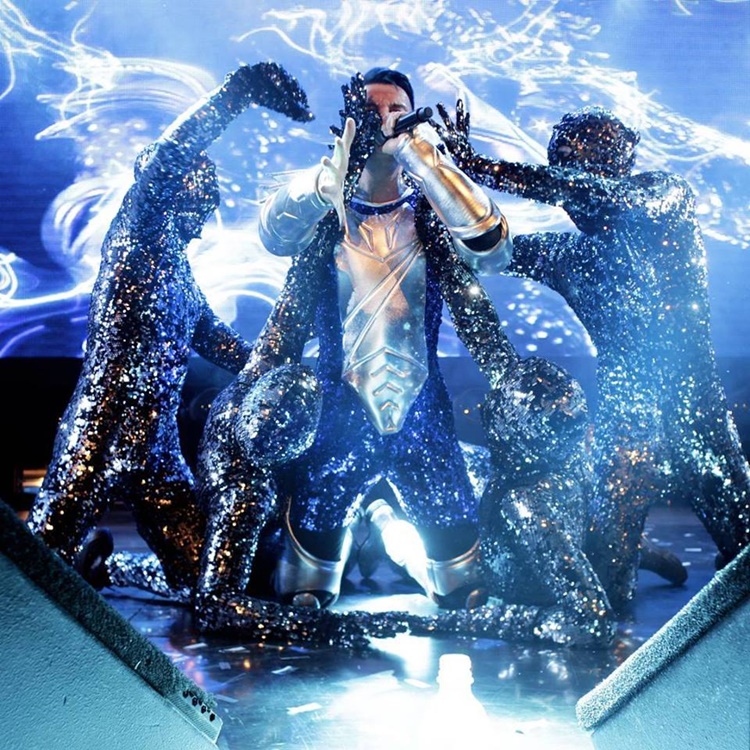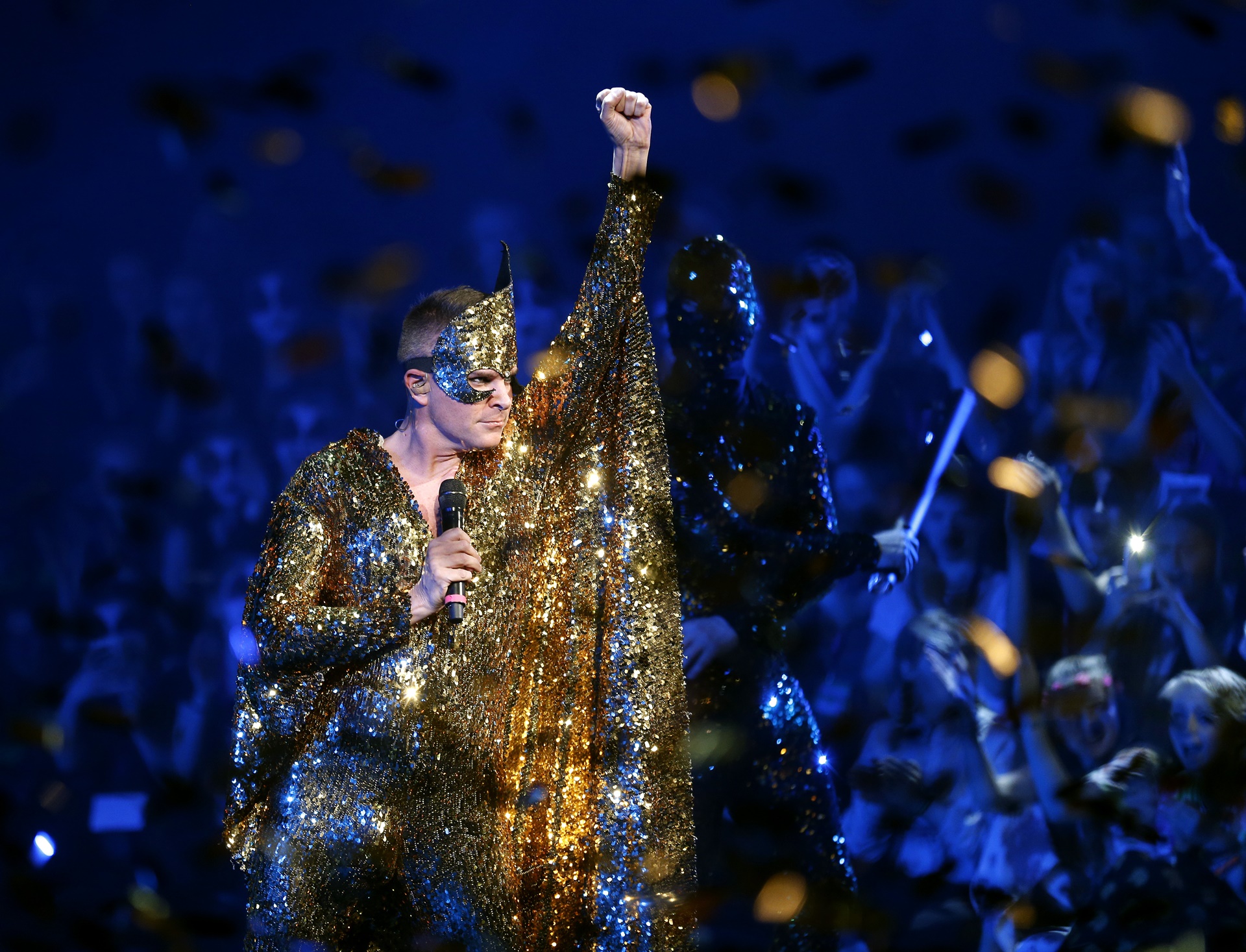Musician Páll Óskar Hjálmtýsson is a pop culture icon in Iceland, and around Europe after his memorable performance in the Eurovision Song Contest of 1997. And from the start of the Pride Parade in Reykjavík, or for 18 years, his float has always been one of the most anticipated entries.
Everyone is welcome to participate in the parade and every year we see a rainbow of extraordinarily creative minds, ecstatic joy and love of life as those colorful floats attract thousands of people to downtown Reykjavík. The last float is usually the loudest and flashiest; that‘s Páll Óskar and his hard-working team, striving to outdo themselves every single year.
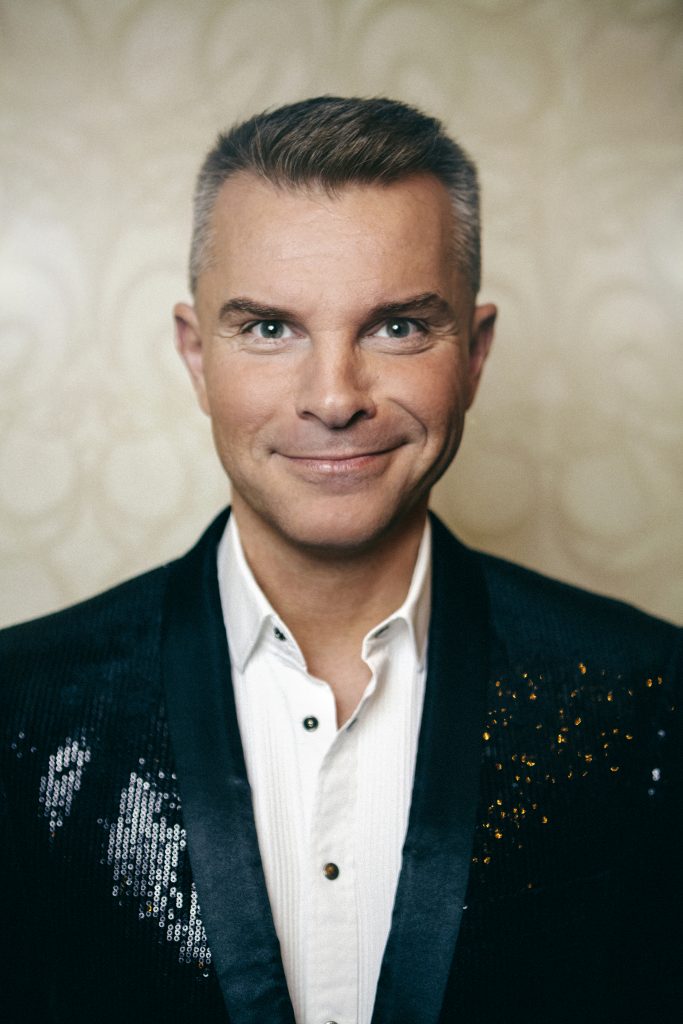
“This year, I‘ll be a unicorn! And I‘m actually mixing it a bit with the Pegasus so it‘s going to be a huge, silver unicorn with wings!”
Páll Óskar sounds excited as he describes how it’ll be able to kick and raise its head and everything. He says that the unicorn is perhaps the most clichéd gay icon you could come up with but he has a good reason to choose it.
“The unicorn is for some reason connected with gay culture and has been for a long time. My theory about that is simply that it‘s not unlike in Icelandic folk-lore, where the society tried to fit gays in with elves and the hidden folk – gay men were simply mythical creatures that were hardly ever seen, much like the unicorn.”
He then goes to find a passage from a book by Skye Alexander, called “Unicorns: The Myths, Legends & Lore”, about the unicorn myths and reads it out loud: “Pop culture has started to embrace, and find humorous irony in the gay iconography, symbolism and culture without coming across as derogatory or un-PC. Why has the unicorn become associated with gay culture? Obviously the horn is a factor but that‘s not the only reason. Traditionally legends have portrayed the unicorn as a rare, independent and untamed creature that doesn’t subscribe to the ordinary rules of conventional society – and certainly some parallels exist there.”
“A unicorn may be the biggest cliché ever but if it is, then this is exactly the right time to bring it to the Pride Parade. You know, go back to basics.”
And Páll Óskar is making a statement with his unicorn. “I think the unicorn is the most beautiful gay symbol because I feel as if it’s simply saying: “You know what, if you’re a unicorn, then BE a unicorn!” It’s as simple as that. A unicorn is filled with pride, it is fearless and it’s not ashamed of anything. It’s made up of many different aspects; it can run and kick – and mine can fly – and you also have to be cautious because it has a horn and could stab you. But no matter what, it is always beautiful; it is always magnificent. So that’s perhaps how a unicorn represents a gay man who’s come out. Because coming out of the closet gives you such an emotional freedom that you feel as if you could actually fly.”
This year’s theme for Reykjavík Pride is “Our History” – that is the history of queer people. And Páll Óskar thinks his magnificent unicorn will fit right in with the theme. “A unicorn may be the biggest cliché ever but if it is, then this is exactly the right time to bring it to the Pride Parade. You know, go back to basics. And it’s just so beautiful to see such a massive sculpture floating among the sea of people in the parade. That’s one of the reasons I always want to have such an extravagant
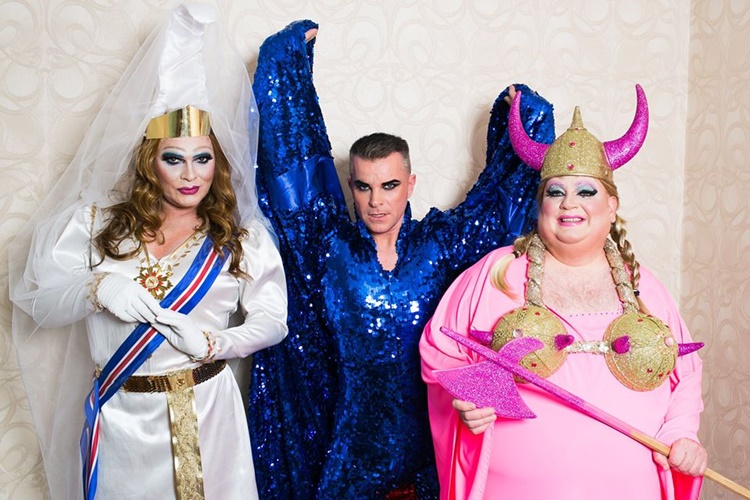
float and make so much noise, play loud music and put so much energy into it – because I think that the whole Pride festival is about being visible. It’s an organized visibility of queer people, once a year, and I just want to emphasize that by being as visible as I possibly can. I want you to see this massive sculpture even if you’re a whole kilometre away. And I want to make as much noise as possible because for such a long time we were invisible in Icelandic society. I even remember that, and I’m only 46 years old, but I remember having no gay role models.”
Somewhat a gay icon in Iceland’s history himself, having publicly come out in the late ´80s, Páll Óskar looks back on his own history and remembers that gay men were almost as rare a sight as unicorns when he was growing up. “I think that the first gay man I ever saw on TV was Jodie Dallas from Soap, remember that sitcom? It was such a revolutionary show in the States, breaking all the taboos at once. And Jodie, played by Billy Crystal, was the gay guy – funnily enough he was never seen on-screen with a boyfriend or anything, he was just the gay character. At that time, I had no idea that Hörður Torfason (troubadour, the first person in Iceland to publicly come out) existed back then; hell, in a way I didn’t even know I existed!”
As a child, Páll Óskar was used to being called names; he was reading fairy tales and watching Disney films while the other boys at school were out playing football. “I was only 7 when I was first called a “sissy”. I was a little baffled at first and I learned already as a kid the nuance in the way people said these words, whether they were said teasingly or with acrimony. I didn’t care if people
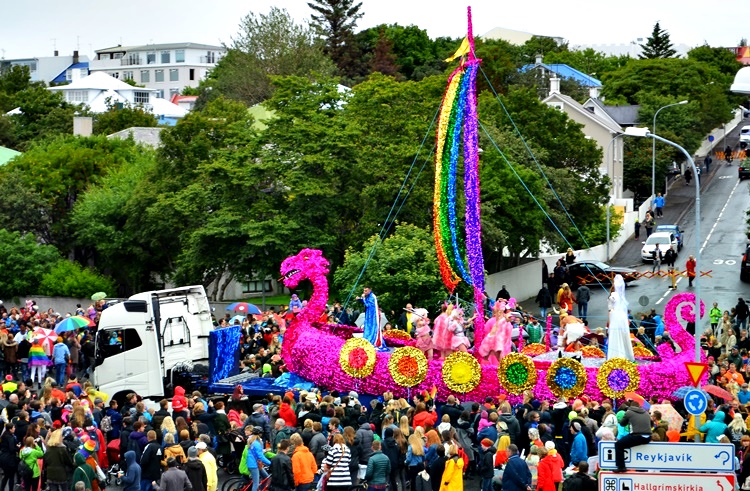
were just teasing me, I saw the humour in that. But if I could hear wrath behind the words, I got a knot in my tummy. But despite everything, I had enough self-respect not to feel bad about being called a sissy. I just shrugged my shoulders and went “Yeah, I’m a sissy!” and just went on with things.”
Páll Óskar says he’s never been afraid, just like the unicorn. He came out when he was 17 because he fell in love with a man. “That summer of ´87 was the summer of love for me. That’s when I lost my virginity and the feeling of being in love was so overpowering and real and solid that I wanted to come out and I didn’t give a rat’s ass about the reactions of my family. I didn’t care what
“ That summer of ´87 was the summer of love for me. I lost my virginity and the feeling of being in love was so overpowering … that I wanted to come out and I didn’t give a rat’s ass about the reactions of my family.”
mummy and daddy would say, what my siblings and my friends would say; I really did everything for love because I was just willing to do anything to make the relationship work out. It then didn’t but that’s another story, I was out!”
Being the youngest of seven siblings, Páll Óskar already had a big generation and cultural gap between himself and his parents. “This was also amidst the height of the AIDS paranoia. The first time I saw an actual gay person on TV, not Billy Crystal in Soap, was when a US panel discussion about HIV was broadcast on Icelandic TV, very shortly before I came out. Some of the gay men there were infected with the virus and were explaining how they were looking after their diet and

exercising to try to live with it for as long as possible. And I was watching this show with my dad, there were just the two of us in the TV room and he blurted out: “Those perverts should all be taken to a desert island and left to die there.” I remember that I didn’t comment but thought to myself “Fuck, this is going to be a difficult battle.” And I was right.
I didn’t have a great relationship with my dad for a long time; when I dropped this bomb on my family, he went berserk and wanted to kick me out of the house. That’s when my mother stepped in. She was like a closed book, we were never confidants and she didn’t say that much but when she spoke, it was important. And that day she gave a little speech. She said that if I, her youngest child, was capable of falling in love, then I had just as much right to invite my boyfriend to her home and sit down by the dinner table to have Sunday roast with all the trimmings, that she’d have cooked – just like my siblings before me, who had turned up unannounced with their girlfriends and boyfriends, eating the Sunday roast without anyone making any objection.
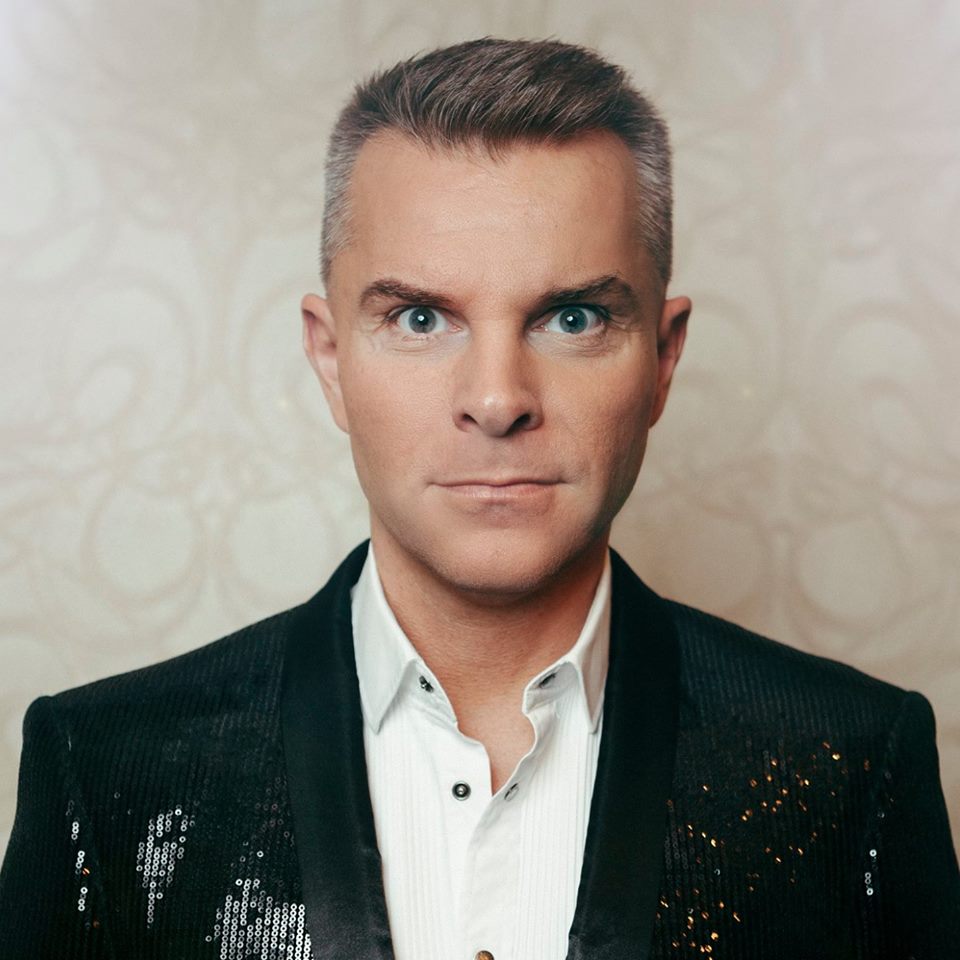
I don’t think my mother realized that she was putting into words exactly what I feel that our fight for rights is all about. We are simply asking that we are allowed to sit at the same table, eat the same Sunday roast, the same potatoes, the gravy and the peas as everyone else. And I’ve tried to live by that manifesto from my mother ever since.”
Back to the Pride Parade, there’s sometimes been a rumor that Páll Óskar wants to drop out of the parade. “I make that threat every year, don’t listen to me,” he says and laughs. “It’s sometimes occurred to me, that it’s time to stop, quit at the top; that it’s too much hassle and too expensive. I pay for it all myself, we don’t accept any sponsorship. So sometimes I’ve been exhausted because it hasn’t always been easy. But then, when the sculpture is ready, the truck is decorated and the float takes off…” he pauses, then cheekily smiles. “Then I always get up again, I always start planning again. Because I see the Pride Parade as an investment in the future and I’m doing this for so many reasons too.
“I’m doing this to commemorate those who have fallen … those who couldn’t keep marching on and chose to take their own lives rather than keep going.”
I’m doing this for the kids who will grow up and hopefully in 20 years’ time will think that being queer is no big deal at all. We have to stay visible and be strong, especially during these times when we could be targeted, where fascism and racism are being allowed to fester. That’s why it’s so important to do this every year; we have to be careful because as soon as you’ve acquired freedom it can so easily be taken away from you again.
I’m also doing this for the older generations, the pioneers that went ahead of me. I’m doing this to commemorate those who have fallen; to commemorate those who couldn’t keep marching on and chose to take their own lives rather than keep going. And basically, I’m just going to be standing up there, shiny and loud and magnificent, waving to all those who are still in the closet and say: “HI, I’m out! See how easy it is?”
